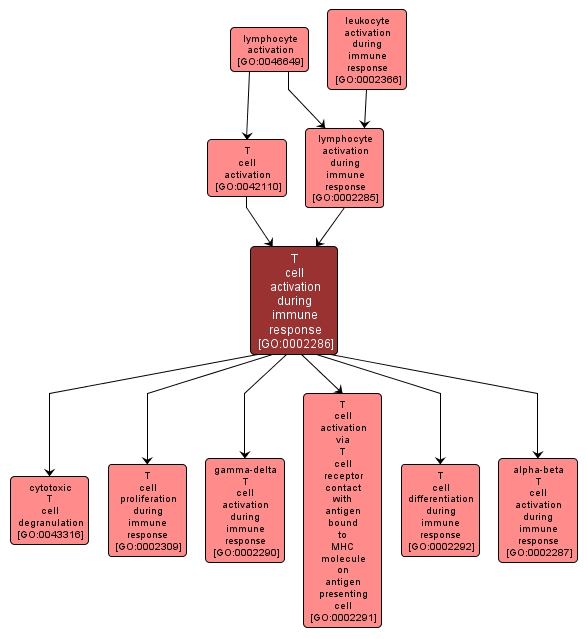GO TERM SUMMARY
|
| Name: |
T cell activation during immune response |
| Acc: |
GO:0002286 |
| Aspect: |
Biological Process |
| Desc: |
The change in morphology and behavior of a mature or immature T cell resulting from exposure to a mitogen, cytokine, chemokine, cellular ligand, or an antigen for which it is specific, leading to the initiation or perpetuation of an immune response. |
Synonyms:
- T lymphocyte activation during immune response
- T-cell activation during immune response
- T-lymphocyte activation during immune response
|
|

|
INTERACTIVE GO GRAPH
|














